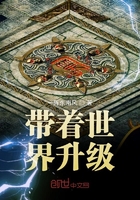When his curiosity about human sacrifices was satisfied, the pilgrim in Greece might turn his attention to the statues and other representations of the gods. He would find that the modern statues by famous artists were beautiful anthropomorphic works in marble or in gold and ivory. It is true that the faces of the ancient gilded Dionysi at Corinth were smudged all over with cinnabar, like fetish-stones in India or Africa. As a rule, however, the statues of historic times were beautiful representations of kindly and gracious beings. The older works were stiff and rigid images, with the lips screwed into an unmeaning smile. Older yet were the bronze gods, made before the art of soldering was invented, and formed of beaten plates joined by small nails. Still more ancient were the wooden images, which probably bore but a slight resemblance to the human frame, and which were often mere "stocks". Perhaps once a year were shown the very early gods, the Demeter with the horse's head, the Artemis with the fish's tails, the cuckoo Hera, whose image was of pear-wood, the Zeus with three eyes, the Hermes, made after the fashion of the pictures on the walls of sacred caves among the Bushmen. But the oldest gods of all, says Pausanias repeatedly, were rude stones in the temple or the temple precinct. In Achaean Pharae he found some thirty squared stones, named each after a god. "Among all the Greeks in the oldest times rude stones were worshipped in place of statues."The superstitious man in Theophrastus's Characters used to anoint the sacred stones with oil. The stone which Cronus swallowed in mistake for Zeus was honoured at Delphi, and kept warm with wool wrappings. There was another sacred stone among the Troezenians, and the Megarians worshipped as Apollo a stone cut roughly into a pyramidal form. The Argives had a big stone called Zeus Kappotas.
The Thespians worshipped a stone which they called Eros; "their oldest idol is a rude stone". It is well known that the original fetish-stone has been found in situ below the feet of the statue of Apollo in Delos. On this showing, then, the religion of very early Greeks in Greece was not unlike that of modern Negroes.
The artistic evolution of the gods, a remarkably rapid one after a certain point, could be traced in every temple. It began with the rude stone, and rose to the wooden idol, in which, as we have seen, Pausanias and Porphyry found such sanctity. Next it reached the hammered bronze image, passed through the archaic marbles, and culminated in the finer marbles and the chryselephantine statues of Zeus and Athena. But none of the ancient sacred objects lost their sacredness. The oldest were always the holiest idols; the oldest of all were stumps and stones, like savage fetish-stones.
Pausanias, ii. 2.
Clemens Alex., Protrept. (Oxford, 1715). p. 41.
Gill, Myths of South Pacific, p. 60. Compare a god, which proved to he merely pumice-stone, and was regarded as the god of winds and waves, having been drifted to Puka-Puka. Offerings of food were made to it during hurricanes.
Another argument in favour of the general thesis that savagery left deep marks on Greek life in general, and on myth in particular, may be derived from survivals of totemism in ritual and legend. The following instances need not necessarily be accepted, but it may be admitted that they are precisely the traces which totemism would leave had it once existed, and then waned away on the advance of civilisation.
The argument to be derived from the character of the Greek as a modified form of the totem-kindred is too long and complex to be put forward here. It is stated in Custom and Myth, "The history of the Family," in M'Lennan's Studies in Early history, and is assumed, if not proved, in Ancient Society by the late Mr. Lewis Morgan.
That Greeks in certain districts regarded with religious reverence certain plants and animals is beyond dispute. That some stocks even traced their lineage to beasts will be shown in the chapter on Greek Divine Myths, and the presumption is that these creatures, though explained as incarnations and disguises of various gods, were once totems sans phrase, as will be inferred from various examples. Clemens Alexandrinus, again, after describing the animal-worship of the Egyptians, mentions cases of zoolatry in Greece. The Thessalians revered storks, the Thebans weasels, and the myth ran that the weasel had in some way aided Alcmena when in labour with Heracles. In another form of the myth the weasel was the foster-mother of the hero. Other Thessalians, the Myrmidons, claimed descent from the ant and revered ants. The religious respect paid to mice in the temple of Apollo Smintheus, in the Troad, Rhodes, Gela, Lesbos and Crete is well known, and a local tribe were alluded to as Mice by an oracle. The god himself, like the Japanese harvest-god, was represented in art with a mouse at his foot, and mice, as has been said, were fed at his shrine.
The Syrians, says Clemens Alexandrinus, worship doves and fishes, as the Elians worship Zeus. The people of Delphi adored the wolf, and the Samians the sheep. The Athenians had a hero whom they worshipped in the shape of a wolf. A remarkable testimony is that of the scholiast on Apollonius Rhodius, ii. 124. "The wolf," he says, "was a beast held in honour by the Athenians, and whosoever slays a wolf collects what is needful for its burial."The burial of sacred animals in Egypt is familiar. An Arab tribe mourns over and solemnly buries all dead gazelles. Nay, flies were adored with the sacrifice of an ox near the temple of Apollo in Leucas. Pausanias (iii. 22) mentions certain colonists who were guided by a hare to a site where the animal hid in a myrtle-bush. They therefore adore the myrtle, . In the same way a Carian stock, the Ioxidae, revered the asparagus.













